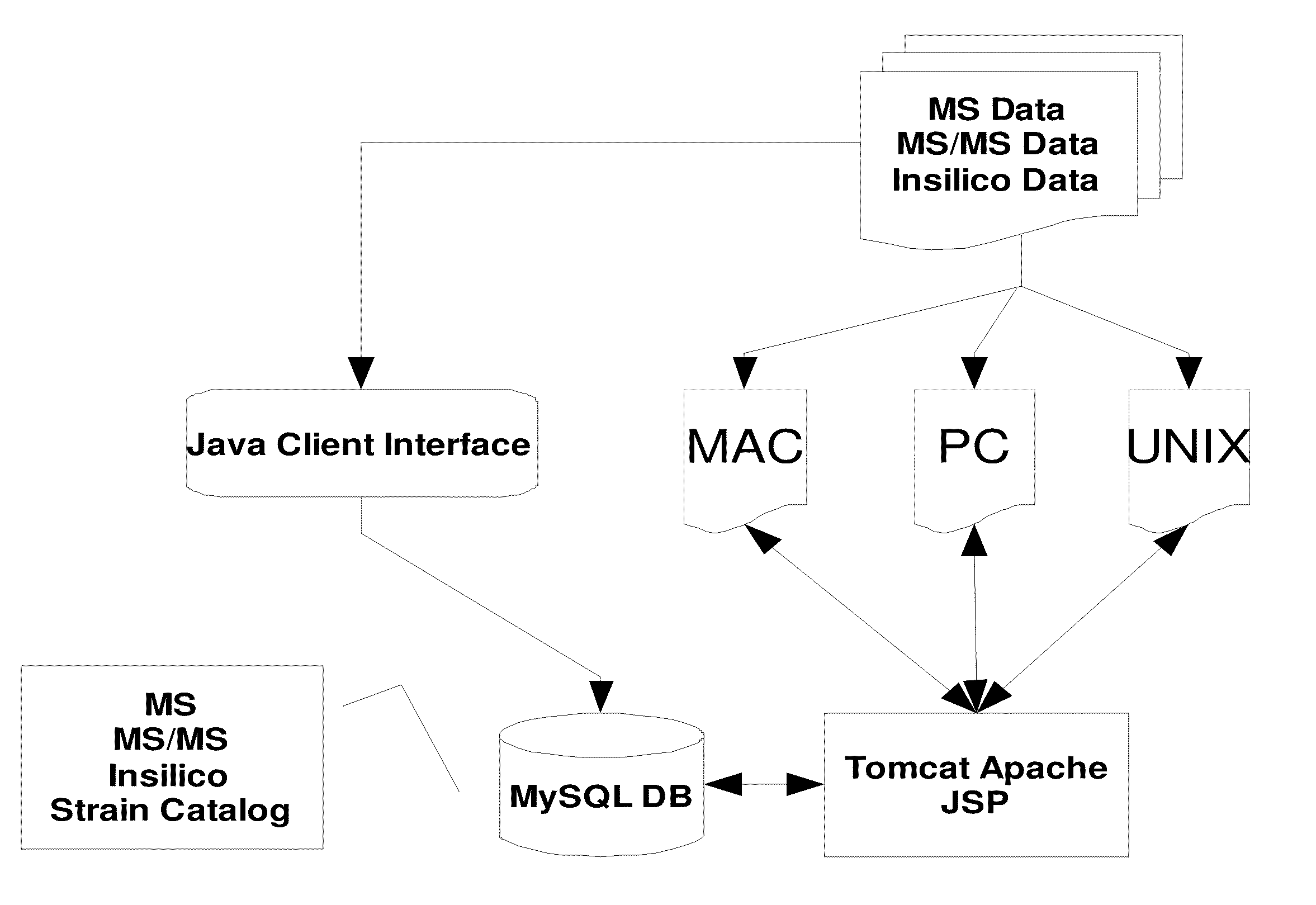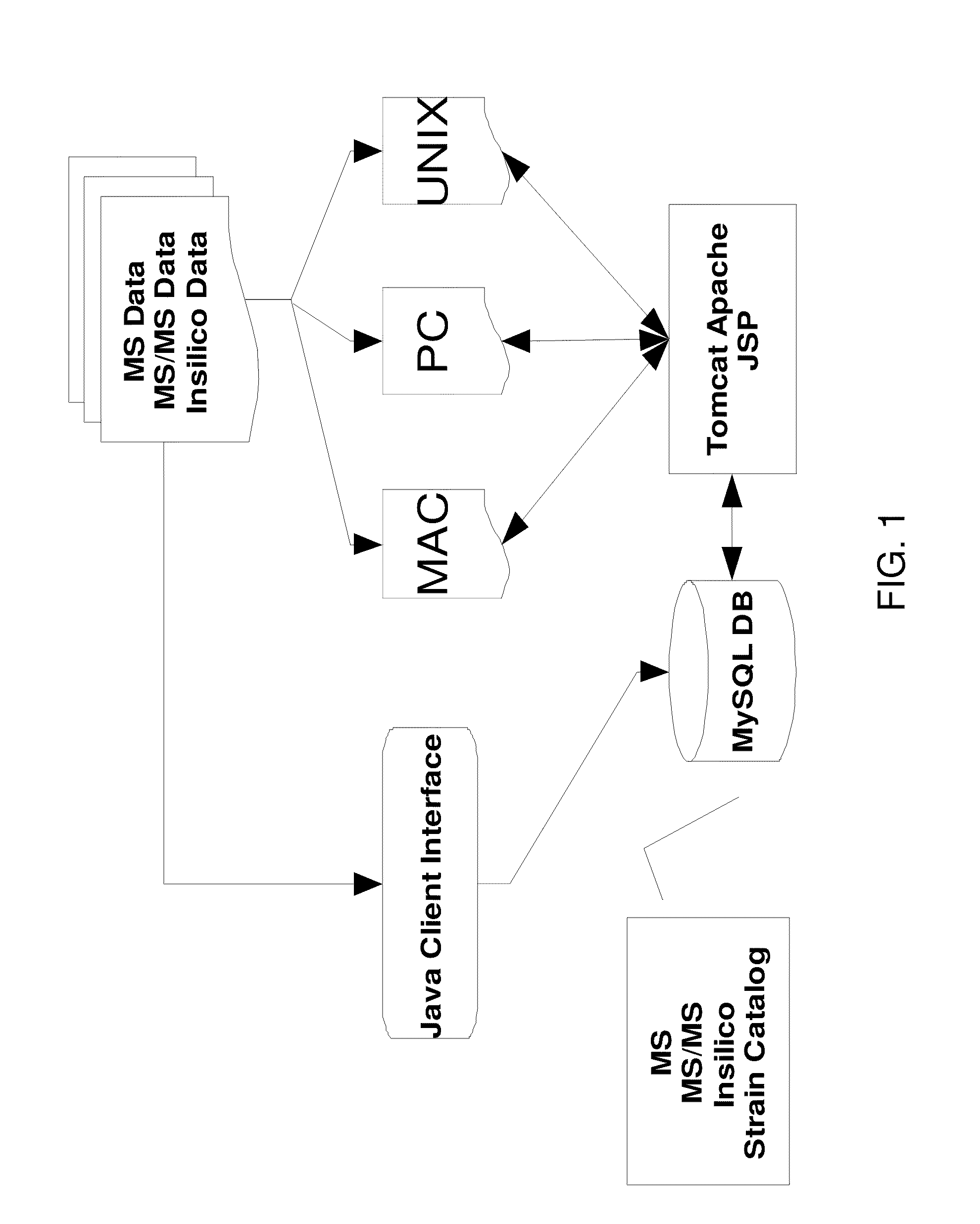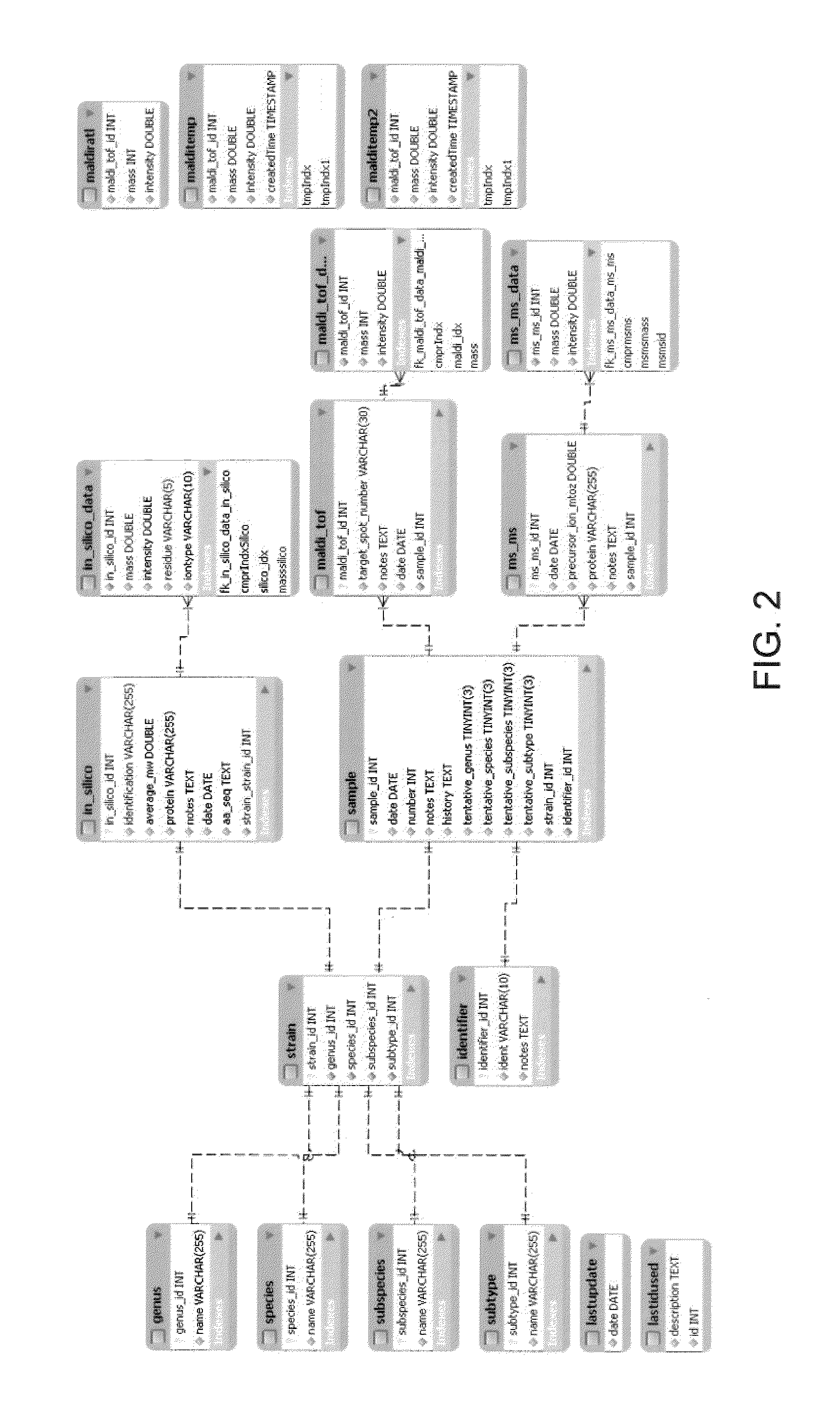Rapid identification of proteins and their corresponding source organisms by gas phase fragmentation and identification of protein biomarkers
a technology of protein biomarker and gas phase fragmentation, which is applied in the direction of instruments, chemical methods analysis, material analysis, etc., can solve the problems of large suffering, death and otherwise, enormous societal costs, and loss of worker productivity,
- Summary
- Abstract
- Description
- Claims
- Application Information
AI Technical Summary
Problems solved by technology
Method used
Image
Examples
example 1
[0187]The following example illustrates an exemplary microorganism identification protocol for the identification of a microorganism using matrix assisted laser desorption ionization (MALDI) mass spectrometry to identify an unknown protein and it corresponding source organism.
example 2
[0188]The following example illustrates an exemplary method for bacterial protein extraction for MALDI-TOF / TOF analysis.
[0189]Bacterial proteins were extracted from Campylobacter cells using a technique that has been previously reported (see e.g., Mandrell R E, et al. Applied Environ. Microbio. 2005; 71: 6292; Fagerquist C K, et al. Anal. Chem. 2005; 77: 4897; Fagerquist C K, et al. J. Proteome Research. 2006; 5: 2527. Briefly, C. jejuni (strain RM1221), C. coli (strain RM2228), C. upsaliensis (strain RM3195) and C. lari (strain RM2100) were each cultured on non-selective growth media for 24-48 hours. One μL of cells were transferred to a microcentrifuge tube containing 0.5 mL of extraction solvents (67% water, 33% acetonitrile and 0.1% TFA) and 40 mg of 0.1 mm zirconia / silica beads (BioSpec Products Inc., Bartlesville, Okla.). The tube was capped and agitated for 60 seconds with a bead-beater. The tube was then centrifuged at 10,000 rpm for 4-5 minutes. An equal volume of sample su...
example 3
[0190]The following example illustrates an exemplary mass analysis using high energy collision-induced dissociation as well as post-source dissociation on a MALDI tandem-TOF mass spectrometer to generate MS / MS spectra in reflectron-mode in positive ion mode.
[0191]Samples were analyzed using an Applied Biosystems 4800 TOF-TOF™ Analyzer mass spectrometer (Foster City, Calif.). Spectra were analyzed in both MS linear-mode and MS / MS in reflectron-mode in positive ion mode. Source acceleration in the first source in linear-mode was 20.00 kV. In MS / MS reflectron-mode, ions were initially accelerated at 8.00 kV in the first source, mass-selected with a timed ion selector, the mass-selected ions were then decelerated to 1.70 kV, fragmented with the target gas (air) in the floating collision cell at 2 kV and the fragment ions formed were re-accelerated to 15 kV in the second source. Data was collected with the metastable (precursor ion) suppressor, located after the 2nd source, in both “on” ...
PUM
 Login to View More
Login to View More Abstract
Description
Claims
Application Information
 Login to View More
Login to View More - R&D
- Intellectual Property
- Life Sciences
- Materials
- Tech Scout
- Unparalleled Data Quality
- Higher Quality Content
- 60% Fewer Hallucinations
Browse by: Latest US Patents, China's latest patents, Technical Efficacy Thesaurus, Application Domain, Technology Topic, Popular Technical Reports.
© 2025 PatSnap. All rights reserved.Legal|Privacy policy|Modern Slavery Act Transparency Statement|Sitemap|About US| Contact US: help@patsnap.com



